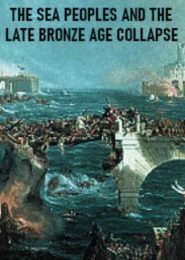Krakatoa: The Last Days (2006)
Krakatoa: The Last Days is a gripping BBC Television docudrama that transports viewers back to the cataclysmic events of 1883. The focus? The volcanic eruption of Krakatoa, an active stratovolcano situated between the islands of Sumatra and Java in present-day Indonesia. This monumental eruption remains etched in history as the second most powerful volcanic event ever recorded, surpassed only by the 1815 eruption of Mount Tambora.
The film draws upon four compelling eyewitness accounts to weave a vivid narrative of the disaster. As the volcano roars to life, it spews forth more than 18 cubic kilometers of tephra in less than 48 hours, unleashing a torrent of destruction. The death toll reaches a staggering 36,500 lives lost. The eruption’s impact reverberates across the region, leaving devastation in its wake.
Key Elements of the Documentary:
- Scientific Exploration: The story introduces Rogier Verbeek, a Dutch geologist portrayed by Kevin McMonagle. Verbeek had surveyed the area two years prior to the eruption, laying the groundwork for modern vulcanology. His research provides crucial insights, complemented by computer-generated imagery that vividly recreates the ash cloud, the stratovolcano’s collapse, pyroclastic flows, and the ensuing tsunamis.
- Human Drama: Amidst the chaos, the film follows a desperate family’s struggle to escape the wrath of Krakatoa. Their harrowing journey unfolds against a backdrop of ash-choked skies, raining coals, and relentless waves. The tension escalates as they grapple with survival in the face of overwhelming odds.
- Maritime Peril: A ship, carrying over 100 passengers, finds itself trapped at sea during the eruption’s final cataclysmic act—the collapse of Krakatoa island. The resulting massive tsunami threatens to engulf them all. The film captures their desperate fight for survival as the ocean churns with fury.
Historical Accuracy and Inaccuracy:
- The documentary adheres closely to historical events, but it also introduces a subplot involving Verbeek. His scientific contributions add depth to the narrative, while a helpful map aids viewers in visualizing the unfolding disaster.
- However, there’s a curious historical inaccuracy: Just after Captain Lindeman leaves the cargo bay and heads to the ship’s deck, one of the girls begins to sing a song to calm the nervous passengers. The song, “Płonie ognisko w lesie” (“Burning fireplace in the forest”), is a popular Polish scout song written 39 years after the Krakatoa eruption.
In summary, Krakatoa: The Last Days immerses audiences in the raw power of nature, the fragility of human existence, and the indomitable spirit of survival amidst chaos. It’s a gripping portrayal of a volcanic catastrophe that forever altered the course of history.




